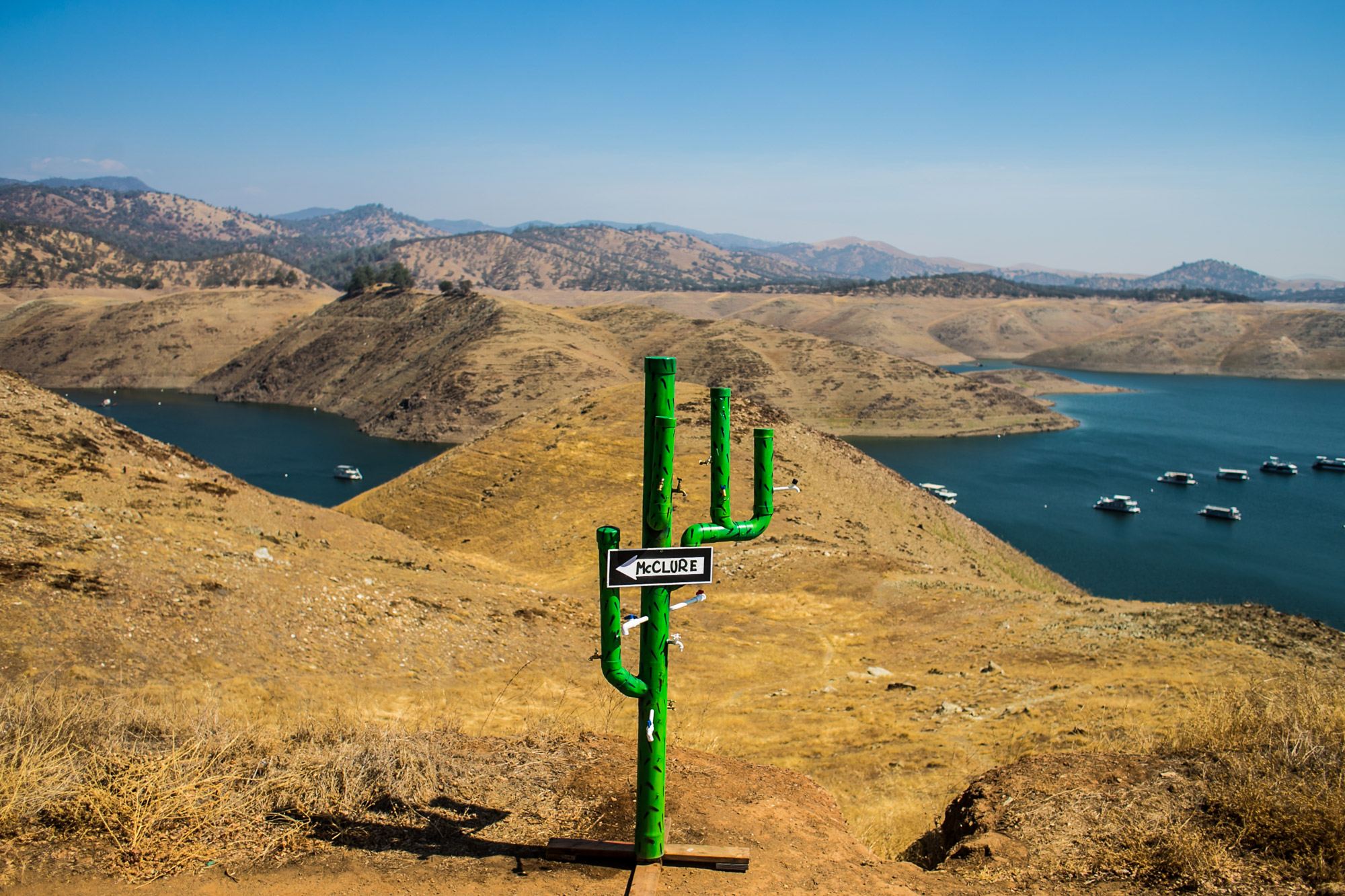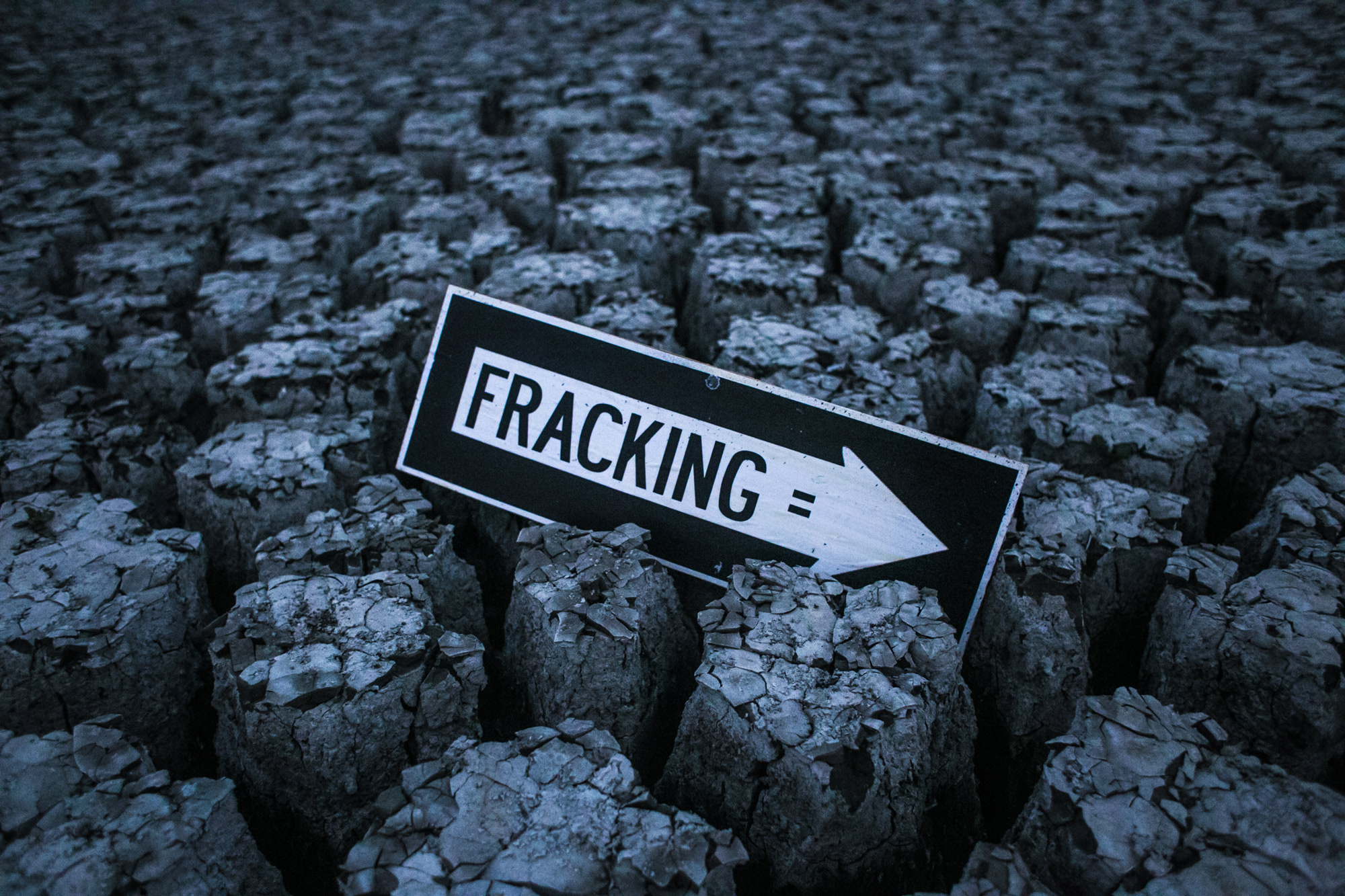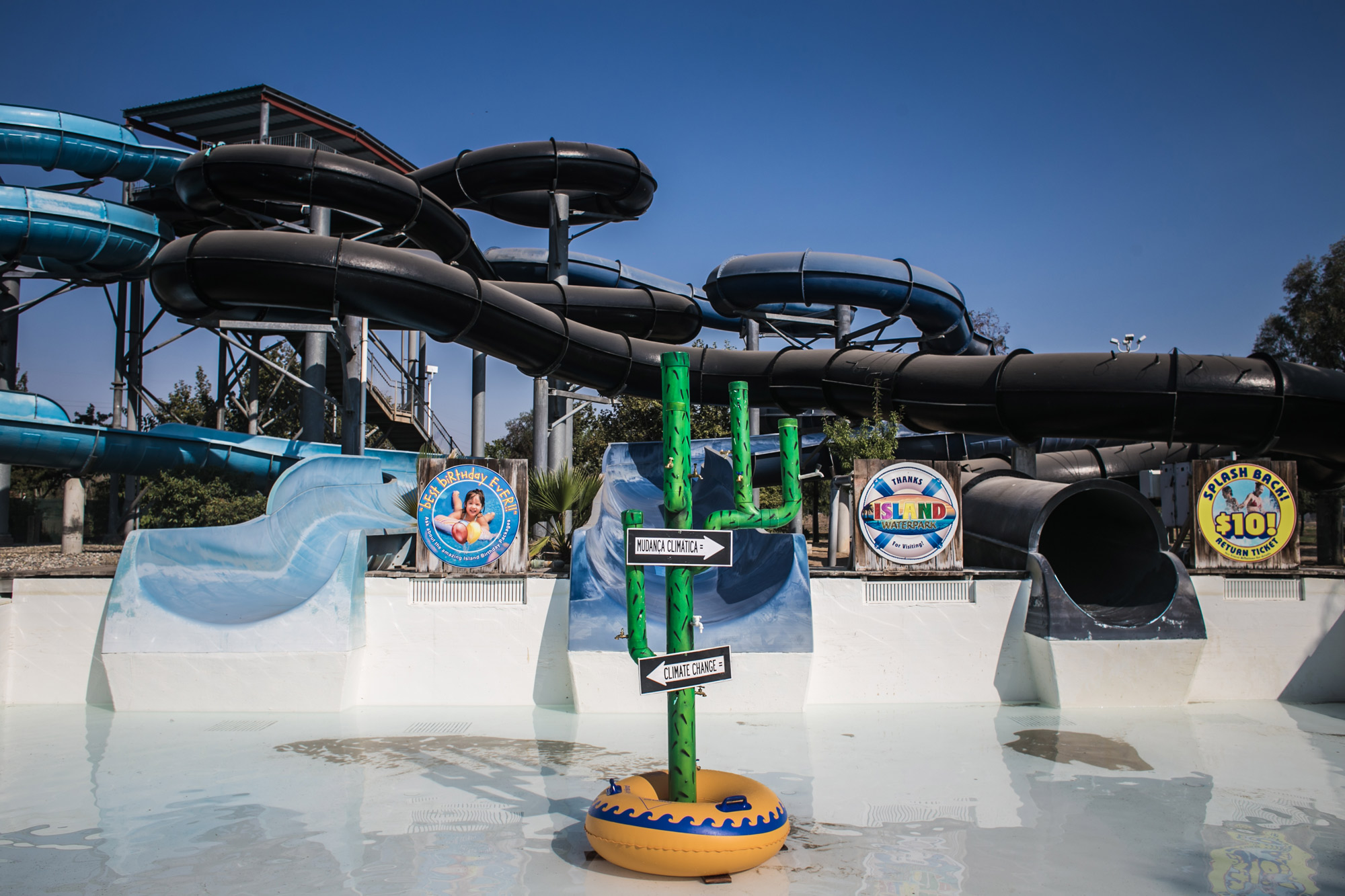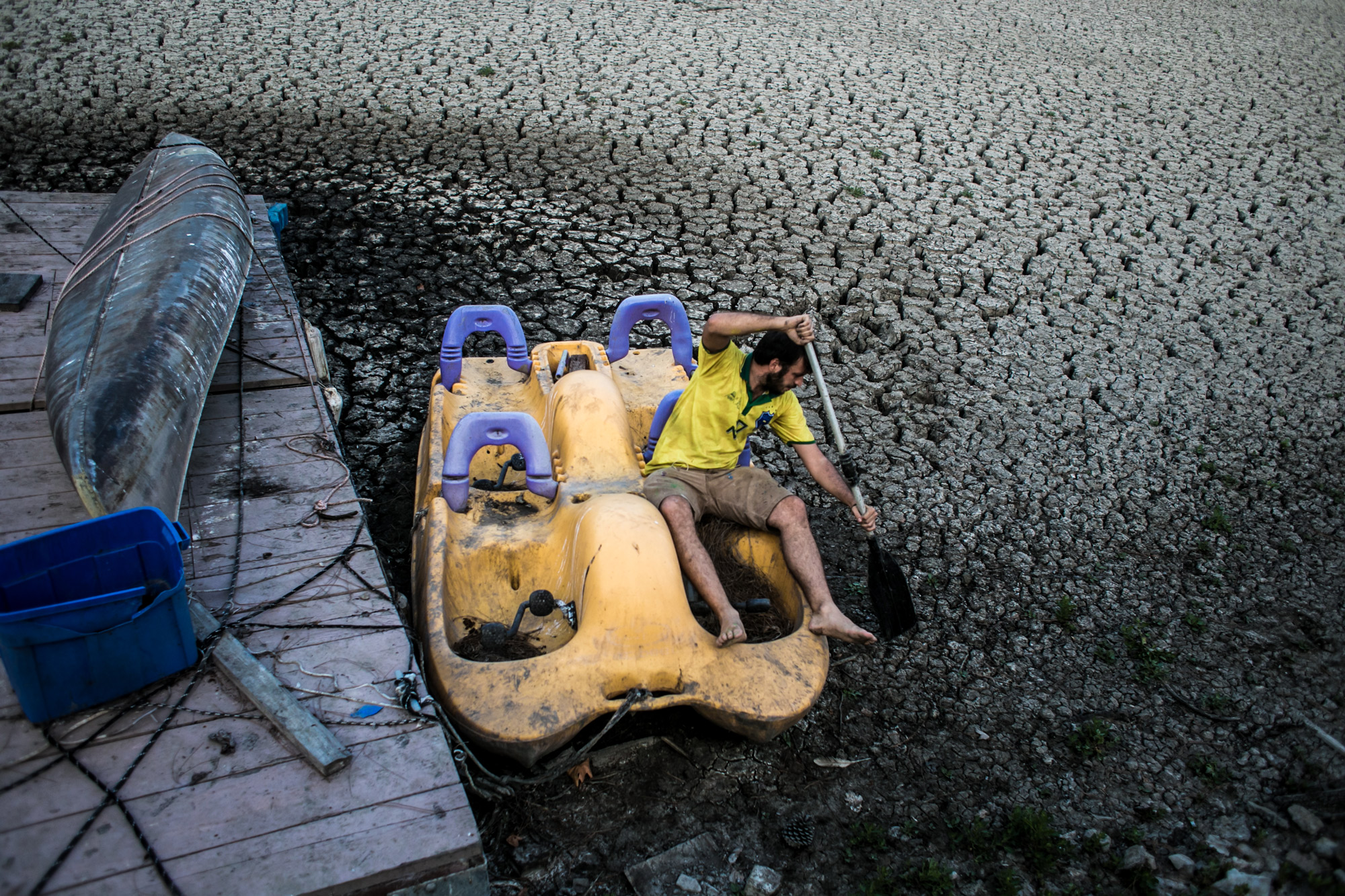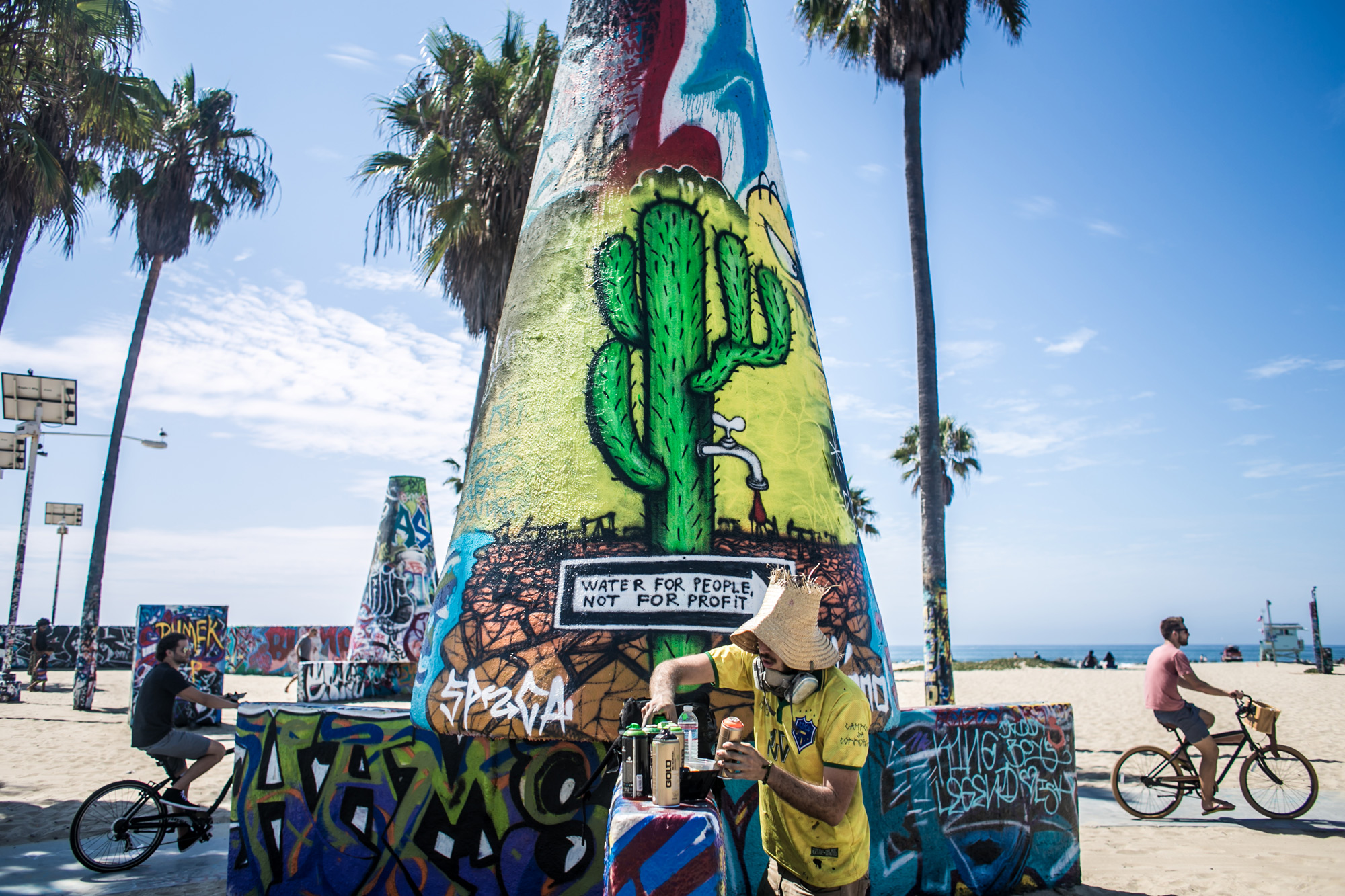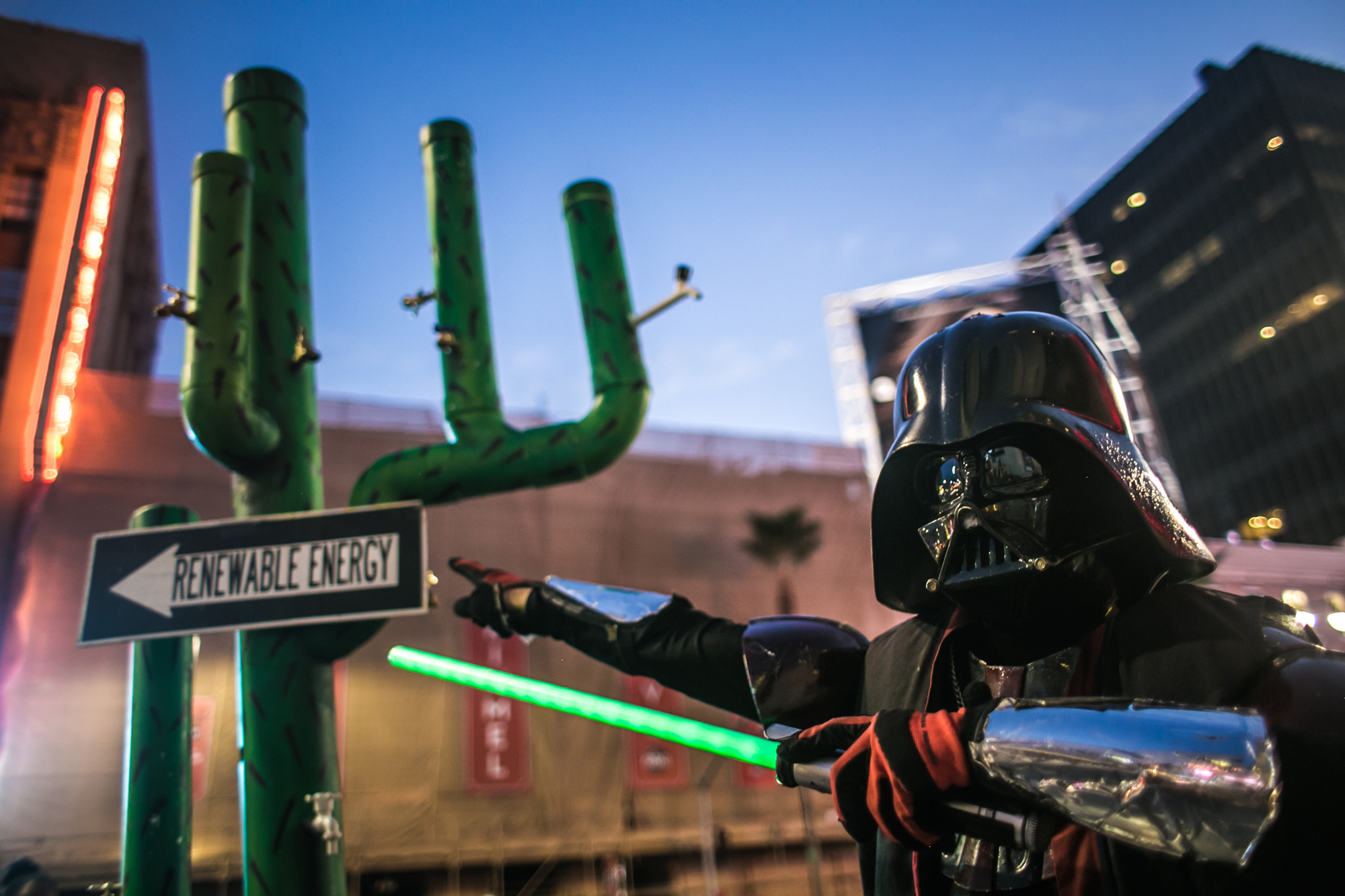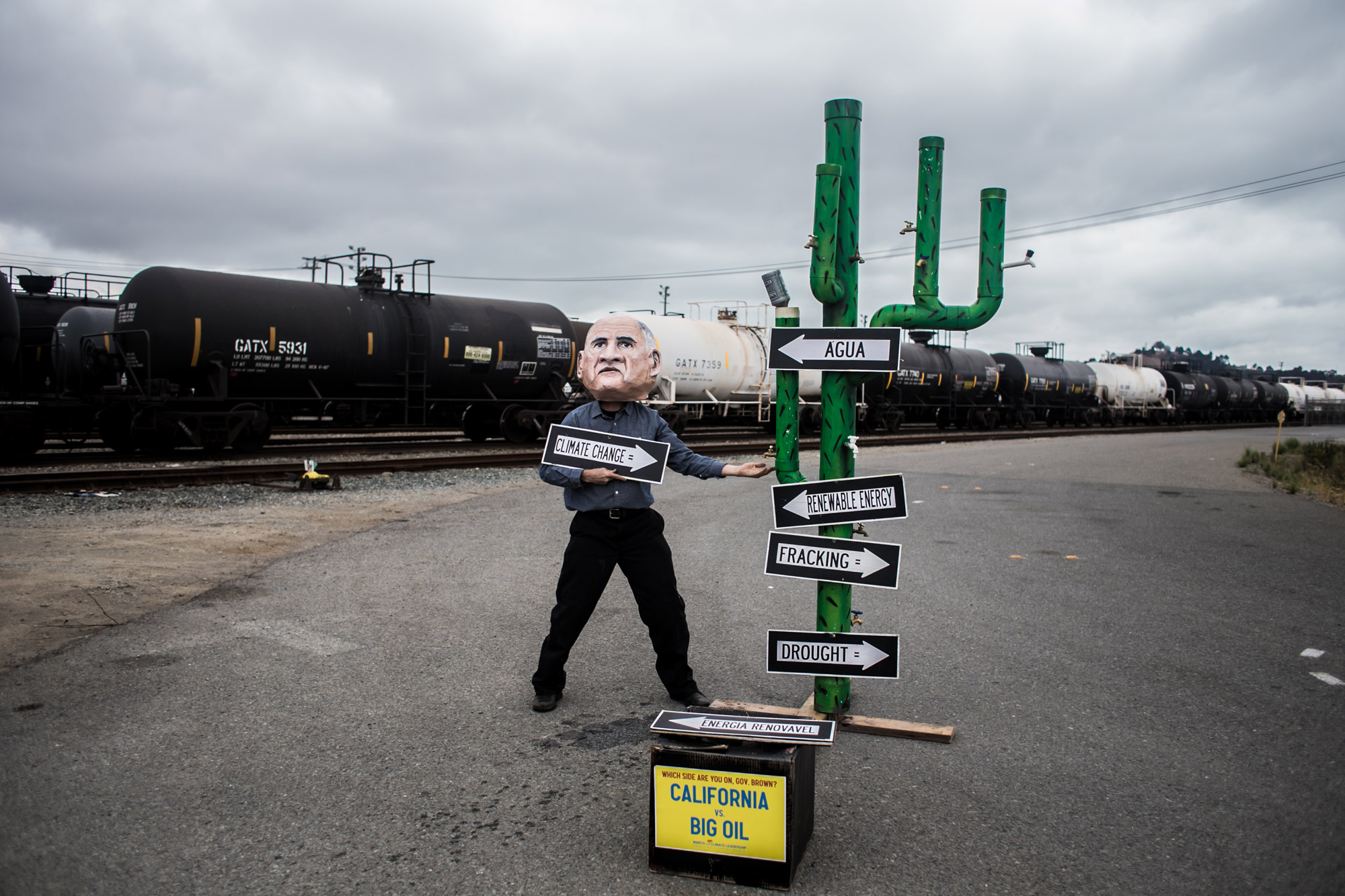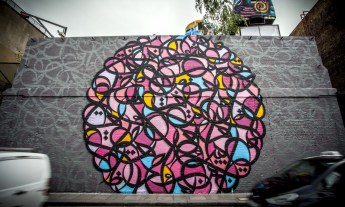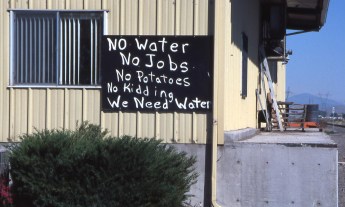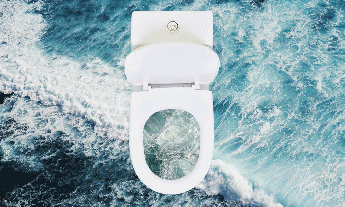Artist Mundano traveled California with a giant bright-green cactus to convey the urgency of vanishing water.
The drought in California is the worst in 1,200 years. Brazilian artist Mundano — known for calling attention to the water crisis in his hometown of São Paulo — recently toured the state and installed his eye-catching artworks in lakes, reservoirs and locations affected by the lack of water. We joined him on his journey.
A cactus is an oasis in the desert
Mundano’s tour included eight lakes and reservoirs that supply the cities of California — and crucially, also supply the farmers of the Central Valley, who produce a full 25% of all the food consumed in the United States. At each site, Mundano installed a cactus sculpture constructed from recycled water pipes. Here, Lake McClure in Mariposa County, California, where the water is currently at 8% capacity.
When the pipes run dry, tap a cactus
Mundano’s cactus has become an international symbol of the effects of climate change. “I started painting cacti as graffiti a long time ago,” he says. “To me, they are the symbol of strength and the best representation of the Brazilian people, who survive on very little — but it is also an international symbol anyone can identify with.” Each sculpture is fitted with taps that run (temporarily!) with real freshwater.
Fracked dry
Mundano uses street signs posted on his cacti and at the bottom of dry lake beds to bring the drought home. In California, water-intensive fracking is used to extract fossil fuels, exacerbating the drought conditions that have had such a stark effect on the state’s landscape. “I went to California in search of similarities with Brazil, but ended up finding more differences,” he says. “In the Cantareira mountain region that supplies water to São Paulo, an enviable watershed still exists despite the empty reservoirs. You can still see green weeds sprouting in the dry soil. California, on the contrary, is completely dry — desert. The exposed floors of the lakes and reservoirs are petrified.”
No water — no fun
Mundano’s cactus rises out of the drained pool of a water park in Kern County, California, a shale oil-producing area. “This, to me, was one of the coolest images we made. I was astounded by the contrast of a water park in the middle of the worst drought in more than 1,200 years — even one that has been shut down,” he says.
Remnants of abandoned lives
Laguna Lake, in San Luis Obispo, California, is littered with the icons of former grandeur — houses, piers, boats. In this image, Mundano jumped inside an abandoned dinghy. “The Cantareira reservoirs supply water to more than 9 million São Paulo residents; they are nearly completely dry,” says Mundano. “In California, I had the same feeling: the water will end. And I’m not talking about the water that we will leave for our children, but the water we need next year. We need citizens to mobilize to reverse this scenario.”
Brazil comes to Venice
Mundano, wearing his trademark hat, makes his mark on Venice Beach.
Feel the force (of the drought)
Cosplay actors played with Mundano’s cactus when he installed it temporarily on the Los Angeles Walk of Fame. Here, Darth Vader helped to bring his message to Hollywood.
Heads up, Governor Brown
Mundano posed the cactus with a papier mâché stand-in for California governor Jerry Brown in Richmond, California, where Chevron operates an oil refinery and ships oil out on tanker trains. “This is a call for the governor to push forward renewable energy,” says Mundano. “There’s no reason why not. In California, compared to Brazil, renewable energy sources are more readily available. It’s common to see solar panels on people’s houses, and the idea of generating energy from renewable sources is culturally accepted.”
All images courtesy Thiago Dezan.

